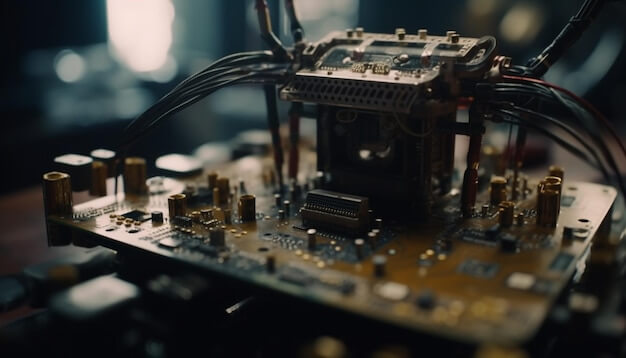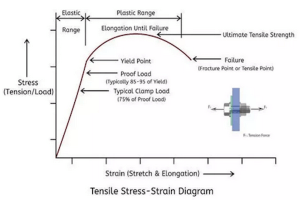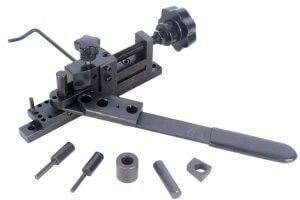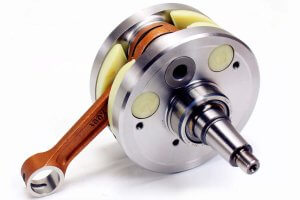Introduction to Prototype CNC Machining in Copper and Its Precision Engineering Solutions
CNC (Computer Numerical Control) machining is a manufacturing process used worldwide, providing precise control of machinery and tools via programmable computer software. Specifically, prototype CNC machining in copper signifies the use of this technology during the production stages which utilize copper as their principal resource. This specific application offers several benefits due to copper’s qualities, such as superior thermal conductivity and resistance to corrosion.
China Online CNC Machining Services – Want.net
The precision engineering solutions offered by CNC machining are crucial within this context for several reasons:
- Firstly, they can create highly intricate designs with minute details that would be virtually impossible through manual operations.
- Secondly, these solutions significantly reduce the potential for errors, ensuring consistency even across large-scale productions.
- Last but not least, being a technologically driven mechanism, it reduces labour intensity while increasing productivity simultaneously.
Hence, it becomes evident that prototype CNC machining, especially when dealing with materials like copper, brings forth immense possibilities backed by the soundness of precision engineering solutions.
Understanding Copper as a Material
Copper is recognized for its excellent conductivity, malleability and corrosion resistance properties, making it an indispensable material in precision engineering applications. In the context of CNC machining, these characteristics can significantly influence the overall process efficiency and product quality.
The high thermal conductivity allows the heat to dissipate quickly during machining operations while the anti-corrosive aspect ensures the longevity of the final product. Its ductile nature enhances its machinability enabling complex forms to be produced accurately. Therefore, understanding copper’s intrinsic properties aids in optimizing machining parameters such as tool selection, cutting speed, feed rate and so on.
Material selection plays a pivotal role in the manufacturing industry. The choice of material directly impacts production cost, processing time, post-processing requirements, part performance, and service life. Ideally, manufacturers opt for a material that balances superior performance with economical and efficient manufacturability.
- Conductivity: Copper’s superior electrical and thermal conductivity makes it integral to many industrial applications.
- Malleability: Enables shaping or bending without breaking thus encouraging design flexibility.
- Corrosion Resistance: Enhances product durability through protection against natural wear and tear over time.
Prototype CNC machining in copper involves:
- Material Selection: Choosing the right grade of copper based on the specific prototype requirements and desired properties.
- Precision Engineering: Utilizing CNC machining techniques to achieve high precision and accuracy in producing copper prototypes.
- Complex Geometries: Creating intricate and complex geometries in copper prototypes to meet the design specifications.
For prototype CNC machining in copper, consider utilizing a Precision Machining Service to ensure the highest level of precision and quality for your copper prototypes.
Precision Engineering Solutions Involving Copper
In the field of precision engineering, copper plays a significant role due to its excellent electrical and thermal conductivity. Precision CNC machining in copper facilitates stringent specifications adherence with utmost accuracy; this ensures enhanced performance, increased durability, reduced wastage, and cost-effectiveness. Detailed measurements and close tolerances are made possible through the innovative use of technology.
For instance, consider an industrial scenario where fine components for telecommunications or power distribution industries are required:
- The exactness provided by precision copper machining guarantees lesser pauses in production lines, maintaining high levels of consistency and reliability. This eliminates potential disruptions from faulty parts and reduces overall manufacturing expenses;
- Such precise components also allow engineers to design more complex parts that can boost efficiency, shrink the size of devices, and advance innovation.
Benefits of Using CNC Machining in Copper Prototypes
CNC machining offers numerous benefits when used in copper prototypes, especially when it comes to improved accuracy, increased efficiency, and cost-effectiveness. First, it eliminates human error that is common in traditional manufacturing methods — an asset that ensures a high degree of precision regardless of the complexity or detail of the design.
Besides this, CNC machining enhances productivity by facilitating continuous, round-the-clock operation with minimal supervision. This capability yields quicker turnover times from ideation to prototyping stages,resulting in higher-level efficiency.
In addition to these advantages, it’s important to note its significant impact on finances. Although initial setup costs may be relatively high, CNC machining tends to be more cost-effective in the long run due to reduced labour expenses, minimised waste, and a lower probability for errors which otherwise could require expensive fixes.
- Improved Accuracy: Uses advanced programming directives ensuring detailed precision
- Increased Efficiency: Enables constant, unsupervised operation leading to faster production
- Cost-Effective: Lowers operational and material wastage costs
Challenges and Solutions in Copper CNC Machining
In the world of prototype CNC machining, working with copper presents several challenges due to its malleable nature and high thermal conductivity. First, copper’s softness leads to difficulties in maintaining dimensional precision during machining. Second, because of its thermal conductivity, heat generated can lead to distortions on the workpiece or even tool breakages.
To overcome these problems, experts apply specific strategies:
- Utilizing tools with sharper edges: This reduces the force applied during cutting, minimizing deflections on the machined part.
- Optimizing feed rates and speeds: This balances between efficient material removal and reduced heat generation. A slower feed rate, coupled with a high-speed spindle, ensures consistency and precision.
- Coolant application: Effective use of coolants helps control operational temperatures and prolongs tool life by reducing wear.
- Implementing rigid setups:This minimizes vibrations which could affect accuracy levels.
The careful application of these strategies enables successful copper CNC machining while preserving the desired level of accuracy and surface finish.
Conclusion
In conclusion, the critical role of prototype CNC machining in copper is undeniable in today’s manufacturing sector. This technology serves as a cornerstone for creating accurate and quality prototypes, paving the way for mass production with fewer errors and waste. Precision engineering solutions prove to be instrumental in achieving such precision. They introduce an unprecedented level of accuracy and repeatability, boosting productivity and improving work standards.
- CNC machining has revolutionized the industry by enabling high-level accuracies and uniformity in copper products.
- This reduces production time and eliminates wastage caused by errors or inaccuracies.
With these tools at their disposal, manufacturers can now deliver consistent and superior results that meet every customer demand while significantly reducing lead times. The significance of prototype CNC machining cannot be discounted—its value goes beyond just production. It supports innovation, drives efficiency, and most importantly underpins sustainable manufacturing practice.
Other Articles You Might Enjoy
- The Role of Prototype Machining in Accelerating Product Development
Introduction: The Importance and Definition of Prototype Machining Prototype machining is a critical element advancing product development. It involves the technique of manufacturing an early model or sample, known as…
- Precision Engineering: The Advantages of Using Copper Alloys in CNC Machining
Introduction to Precision Engineering and CNC Machining Precision engineering is a discipline that aims at designing machines, fixtures, and other structures that possess high levels of accuracy and stability. It…
- Aerospace CNC Machining: Precision Engineering for the Skies
CNC (Computer Numerical Control) machining stands as a cornerstone in the production of aerospace components, where its application spells the difference between success and catastrophic failure. In an industry that…
- Elevating Precision Standards through Chamfer in CNC Machining
1. Introduction: The Pursuit of Unparalleled Precision In the realm of CNC machining, precision is paramount. This section introduces the article by exploring the significance of precision in manufacturing and…
- What Criteria Define the Best CNC Machining Service for Precision Copper Manufacturing?
Understanding Precision CNC Machining for Copper The precision CNC machining process requires a deep understanding of the properties of copper. Copper is known for its excellent electrical conductivity, thermal conductivity,…
- Precision Prowess: Unveiling the Advantages of China CNC Machining
1. Introduction: The Role of Precision in Manufacturing Excellence In this introductory section, we delve into the critical role that precision plays in manufacturing and set the stage for an…









